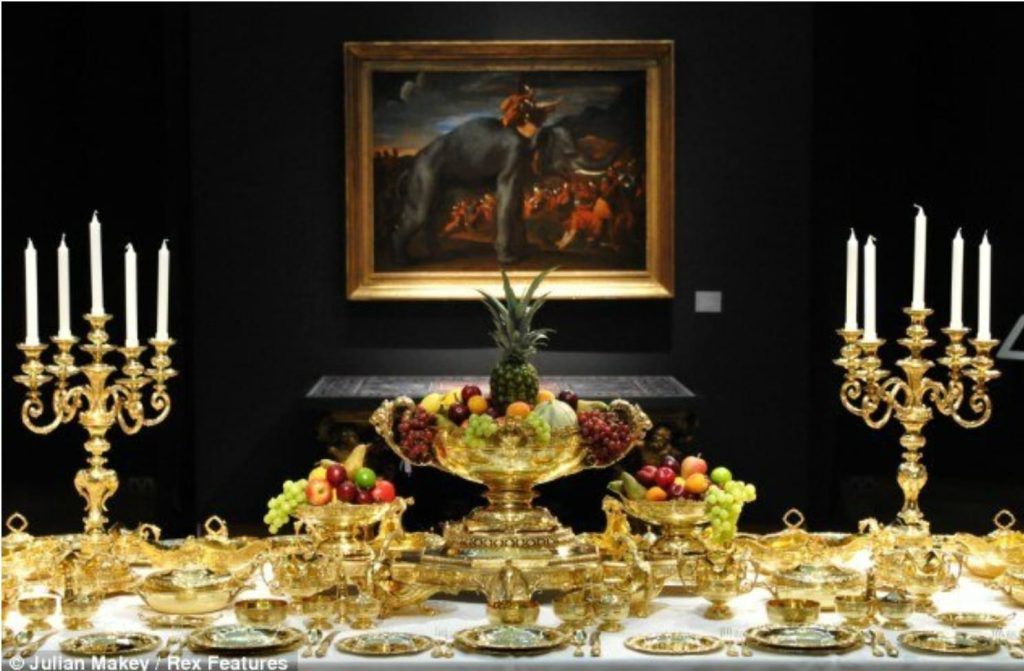The Great Banquet Service of the Maharaja unveiled at the Faberge Museum
Starting February 1, the Faberge Museum will place on permanent exhibition the lavish banquet service of the Maharaja of Patiala. This exquisite dinner service was made by the leading gold and silversmiths of early 20th century England, and it amazes with its grandeur. There are 40 types of items made from silver and gold-plating that total 1,500 pieces and with a total weight of 600 kilos. The service is the finest made in England in this period, which was the twilight of the era of Faberge. The service breaks records in many categories: the largest silver banquet service in the world; the largest royal service in the world; the largest English service ever made; and the most expensive gold-plated silver service in the world.

This banquet service accommodated 200 people, and it was originally packed in 12 large trunks. It was first used on 24 February 1922 for the state dinner held by the Maharaja in honor of the Prince of Wales, future King Edward VIII, during his visit to India. Since there were no other luxurious services in the world capable of serving 200 guests, the Maharaja’s service would sometimes return to the English court. But after each banquet the number of pieces would diminish because guests were keen to take home a small souvenir of the royal service.
Maharaja Bhupinder Singh of Patiala (1891-1938) was one of the richest and most ambitious rulers of India during the time of British colonial rule. He loved luxury, for instance, he owned the famous ‘’Patiala Necklace” made by Cartier with almost 3,000 diamonds with a center diamond from DeBeers that weighed 428 carats. He was also one of the most progressive leaders of the time and he represented India in the League of Nations and served in the Indian Chamber of Princes. He was married 10 times and had 88 official children.
